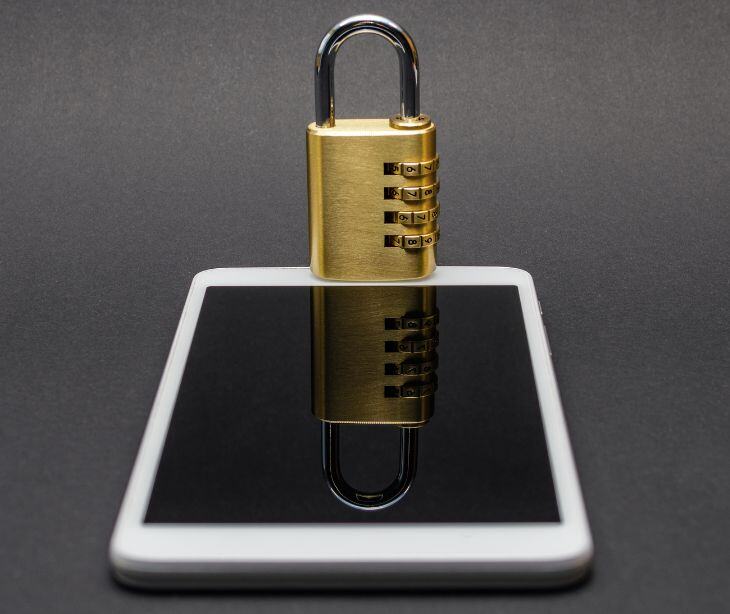
Text messaging security involves several protocol layers working together to protect messages from unauthorized access and make sure they reach their intended recipient securely. These layers apply to standard text messaging, and when looking at niche sectors like healthcare additional protection is necessary.
The protocol layers
Application layer
At the top of the hierarchy, the application layer is where text messaging services and applications operate. This layer defines the protocols that applications use to exchange data, such as SMS (Short Message Service) for basic text messages or MMS (Multimedia Messaging Service) for messages containing images, video, or audio. It also includes newer instant messaging protocols used by apps like WhatsApp or Telegram, which offer enhanced features like group chats, read receipts, and end-to-end encryption.
Transport layer
The transport layer is responsible for ensuring reliable data transfer between two devices. It manages the segmentation of data into smaller packets, controls the flow of these packets to prevent network congestion, and ensures error-free data transmission. For text messaging, protocols like TCP (Transmission Control Protocol) might be used for internet-based messages to guarantee message delivery by retransmitting lost packets, while traditional SMS might use a more basic transport mechanism tailored to the cellular network's signaling pathways.
Network layer
This layer manages data routing across the complex landscape of interconnected networks that make up the internet and cellular networks. It determines the optimal path for data packets to travel from the sender to the recipient, using protocols like IP (Internet Protocol) for messages sent over the internet. For SMS and MMS, the network layer involves specific protocols that interface with cellular networks to route messages through SMS centers (SMSCs) and multimedia messaging centers (MMSCs).
Data link layer
Sitting just above the physical layer, the data link layer establishes and maintains a direct link between two devices over a particular medium, ensuring that data packets are framed, addressed, and ready for transmission. It also handles error detection and correction arising from transmission problems. In cellular networks, this layer encompasses the protocols that manage access to the radio spectrum and network towers, facilitating the seamless transfer of messages across the network.
Physical layer
The foundational layer of the protocol stack, the physical layer, deals with the transmission of raw data bits over a communication channel. This includes everything from the radio waves used in wireless communication to the electrical signals in wired connections. For text messaging, this involves the technologies that cellular network providers use to send signals between mobile phones and network towers, as well as the physical infrastructure of the internet for app-based messaging services.
How they work together
In the study Modular Design of Secure Group Messaging Protocols and the Security of MLS, the intricate cooperation of text messaging protocol layers is elaborated to enhance the security and efficiency of group messaging, especially within the context of the Messaging Layer Security (MLS) project. Starting at the application layer, where user-facing messaging applications reside, protocols define how messages are formatted and processed for secure transmission. This layer employs encryption to safeguard the contents of messages before they are sent.
The journey continues at the transport layer, which ensures the reliable transfer of these encrypted messages by managing data flow and error correction, often through protocols like TCP for internet-based messages. As messages navigate through the network layer, optimal routing paths are determined, allowing data packets to traverse multiple networks efficiently. This is necessary for both internet-based and cellular network-based text messaging, adapting dynamically to ensure messages find their way to the intended recipient.
The data link layer then establishes a robust connection over the chosen transmission medium, handling framing and direct link management, which is vital for maintaining the integrity of message transmission over cellular or wired networks. Finally, at the physical layer, the actual transmission of data occurs, converting digital message data into signals that can be sent over the airwaves or through cables, completing the end-to-end journey of a message from sender to receiver.
The additional security necessary to ensure HIPAA compliant text messaging
- AES (Advanced Encryption Standard): AES is a widely used encryption standard that can encrypt text messages at a high security level, typically at 128, 192, or 256 bits. Its robustness makes it suitable for protecting PHI (Protected Health Information) during transmission.
- TLS (Transport Layer Security): TLS, specifically TLS 1.2 and 1.3, ensures that the connection between the messaging application and the server is secure. Encrypting the channel prevents eavesdropping and tampering with the message data in transit.
- VPN (Virtual Private Network): VPNs can provide an additional layer of security by encrypting the entire internet connection of the device sending or receiving the message, ensuring that PHI is secure even over unsecured or public Wi-Fi networks.
- PKI (Public Key Infrastructure): PKI uses a pair of cryptographic keys (a public key and a private key) to secure electronic communications. In the context of HIPAA compliant messaging, PKI can help ensure that messages can only be decrypted by the intended recipient.
- SSH (Secure Shell): Although not commonly used for text messaging itself, SSH can secure remote access to servers hosting the messaging application, ensuring secure administration through encrypted channels.
- OAuth 2.0 for authentication: OAuth 2.0 is a framework that allows for secure delegated access, ensuring that users can safely log in and authenticate to access their messaging applications without exposing their credentials.
- HIPAA compliant data storage solutions: While not a protocol or encryption method, ensuring that any stored messages or logs are kept on HIPAA compliant data storage solutions is necessary. This often means encryption at rest in addition to encryption in transit.
See also: HIPAA Compliant Email: The Definitive Guide
FAQs
How does the choice of encryption algorithm impact the speed of text messaging?
The choice of encryption algorithm can impact the processing time required to encrypt and decrypt messages, potentially affecting the speed of text messaging. More complex algorithms with higher security levels might introduce slight delays compared to simpler, faster algorithms. However, modern encryption algorithms are designed to balance security with efficiency, minimizing the impact on speed for end-users.
Can text messages be intercepted during transmission despite encryption?
While encryption enhances the security of text messages, intercepting encrypted messages during transmission is still technically possible. However, without the encryption keys, the intercepted messages would be indecipherable to the attacker.
Are there any legal requirements for text messaging encryption?
Legal requirements for text messaging encryption vary by region and industry. For instance, industries dealing with sensitive information, such as healthcare and finance, are subject to stricter regulations like HIPAA in the United States, which mandates the protection of personal information through measures like encryption.
Can users manually select the encryption protocol for their text messages?
In most text messaging applications, the encryption protocol is predetermined by the application developer or service provider and cannot be manually selected by users. This standardization ensures consistency in security practices and user experience across the platform.
Subscribe to Paubox Weekly
Every Friday we'll bring you the most important news from Paubox. Our aim is to make you smarter, faster.




